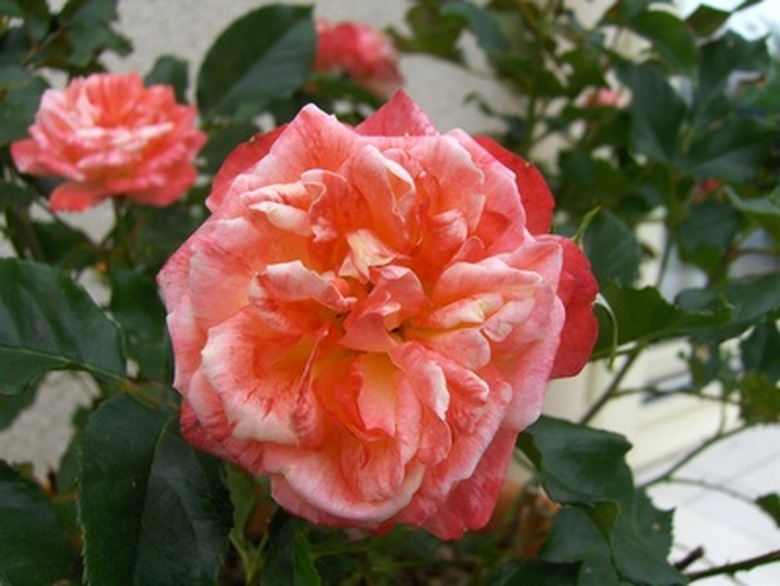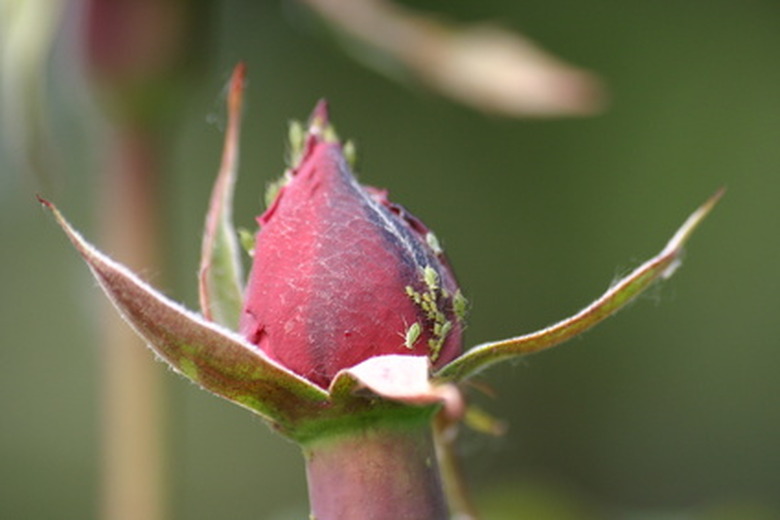How To Bring Your Rose Bushes Back To Life
Things Needed
- Garden gloves
- Pruning shears
- Shovel
- Compost
- Spray bottle
Roses are a very sturdy plant that is known to have existed 35 million years ago and has been cultivated for at least 5,000 years. The popularity of rose culture falls and rises with gardening trends of the times; so sometimes roses get neglected. It is worth the time and effort to bring a rose bush back to life and it often can be done easily. Roses grow best in good soil and will respond quickly to the improved nutrition from compost. Pruning allows the rose bush to use energy to regenerate roots.
Assess, Prune and Amend
Step 1
Assess the soil around the rose bush. Poor nutrition may have caused the bush to die. If soil is gray, dusty and lifeless it needs organic matter. Check for disease and insects. Small green bugs grouped in colonies are aphids. Rust-colored marks on leaves indicate a plant virus. Tiny black specks are spider mites. White fuzz is powdery mildew.
- Roses are a very sturdy plant that is known to have existed 35 million years ago and has been cultivated for at least 5,000 years.
- Rust-colored marks on leaves indicate a plant virus.
Step 2
Prune the bush by removing all dead and diseased stems, cutting back into green wood. Pruning will allow the rose bush to use all its energy to re-grow. Remove all branches that grow towards the middle of the plant. This opens it up for good air circulation. Remove all suckers that grow from the plant base. Prune the bush back to between 12 and 24 inches in height.
Step 3
Amend the soil with two shovels full of compost placed in a circle around the plant base. Compost is organic matter that contains billions of the living microorganisms that provide nutrients for growth. Compost regenerates the soil and helps bring the rose bush back to life. It provides a slow constant release of the nitrogen, phosphorous and potassium that create green growth and blooms.
- Prune the bush by removing all dead and diseased stems, cutting back into green wood.
- Compost regenerates the soil and helps bring the rose bush back to life.
Step 4
Water thoroughly. Rose roots go very deep; a neglected rose needs to soak in a lot of water.
Step 5
Apply an insect spray if you have discovered there are insects or disease problems. Insecticidal soap is a good general purpose organic insect spray. Hydrogen peroxide applied directly to affected leaves kills most insects. Many gardeners use diluted compost tea as a preventative insect and disease spray.
Tip
An old and neglected rose bush may be an heirloom variety rather than a hybrid. Hybrid roses have rootstock that is a different rose variety than the upper part of the plant. Heirloom, or heritage, roses have the strength of generations of non-interference in breeding. Heirloom roses are often more disease resistant, more fragrant and have very abundant blooms.
Warning
There will be signs of new growth on the rose bush within a month if you live in a mild climate. If you have pruned and composted the bush in the fall, allow the winter months for recovery and look for signs of growth in the spring.

